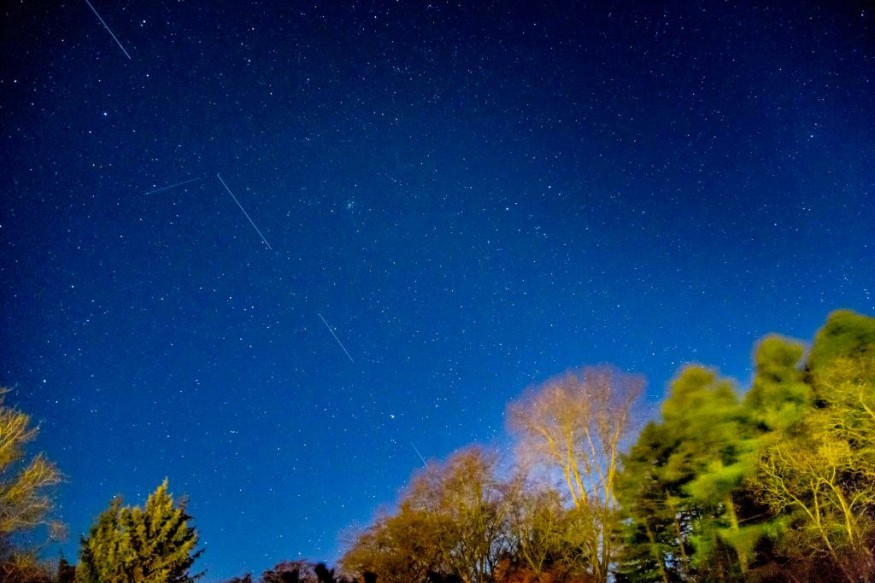A geomagnetic storm, according to SpaceX, destroyed the most recent batch of Starlink broadband satellites, preventing them from reaching their intended orbit.
Fox News said 49 satellites were launched from Kennedy Space Center in Florida on February 3 atop a Falcon 9 rocket. They were designed to gently ascend to their appropriate orbit.
Everything appeared to be well until the next day, when a powerful geomagnetic storm heated the upper atmosphere, increasing air density.
In the larger scheme of things, SpaceX recently passed the 2,000 satellite launch milestone and has plans to launch 12,000, if not a great many more - so losing 40 of them would not be a big issue.
Even so, that's the equivalent of a Falcon 9 rocket's whole Starlink launch capacity exploding in the stratosphere.

Geomagnetic Storm Hits Starlink Satellites
According to SpaceX, the geomagnetic storm on Friday had a substantial influence on the Starlink satellites that were launched on Thursday. The atmosphere warms as a result of these storms, and air density rises at low deployment altitudes.
Data onboard the GPS obtained by The Verge said the storm's escalation speed and intensity caused air drag to rise by up to 50% compared to earlier launches.
The Starlink crew put the satellites into a safe mode, flying edge-on (like a sheet of paper) to save drag and "take refuge from the storm," and continued to work closely with the Space Force's 18th Space Control Squadron and LeoLabs to deliver satellite updates based on ground radars.
The recent incident is an opportunity for SpaceX to boast how little its satellites damage the sky, which has been questioned in recent weeks.
Some attempts have been made to remedy the problem, such as the use of coatings and shielding to decrease the light from satellites.
According to SpaceX, the Starlink team attempted to instruct the satellites to fly in safe mode to "seek cover from the storm." The greater drag from the thicker atmosphere, on the other hand, took a toll on the satellites.
Astronomers Want Elon Musk to Stop Blocking The Sky With Starlink
With that, a group of astronomers has teamed up to stop millionaires like Elon Musk from clogging the skies with obstructive satellites.
ALSO READ : SpaceX Starlink May Interfere Square Kilometer Array (SKA), Other Large Radio Telescopes
Thousands of objects in Low Earth Orbit, according to experts, are making it difficult for them to look into space, making it difficult to identify deadly asteroids rushing towards us.
New research obtained by Science Times adds to the growing fear that Starlink satellites are leaving streaks in astronomers' photographs as they circle, potentially obstructing our ability to detect deadly asteroids.
As a result, astronomers are seeking to increase the pressure by establishing a new center inside the large International Astronomical Union (IAU).
The new "Centre for the Protection of the Dark and Quiet Sky from Satellite Constellation Interference" aims to bring together astronomers, satellite operators, regulators, and the general public.
"In the past, the main source of interference was the light pollution produced by the urban illumination, the so-called artificial light at night," said center director Piero Benvenuti per The US Sun.
"But more recently, the impact of the large constellations of communication satellites became a more serious concern because of their ubiquitous invasiveness," Benvenuti added.
However, due to their omnipresent invasiveness, the impact of massive constellations of communication satellites has recently become a more severe worry.
There are other contestants in the internet space race, such as OneWeb, which has a constellation of 650 satellites. However, they are higher up to reduce congestion.
There are also concerns that a catastrophic buildup of space debris left behind by satellites might obstruct rockets' ability to leave Earth, a phenomenon known as "Kessler Syndrome."
Donald J. Kessler, a NASA scientist, coined the term "Kessler Syndrome."
It alludes to the possibility that a chain reaction of bursting space debris may produce so much space trash in the Low Earth Orbit that humanity will be stranded on Earth.
Experts have criticized "stupid" governments such as Russia for purposefully destroying spacecraft, claiming that this, too, threatens rendering space uninhabitable.
RELATED ARTICLE : SpaceX Starlink Satellites Now Affect More Twilight Photos, Study Finds
Check out more news and information on Starlink in Science Times.
© 2025 ScienceTimes.com All rights reserved. Do not reproduce without permission. The window to the world of Science Times.









